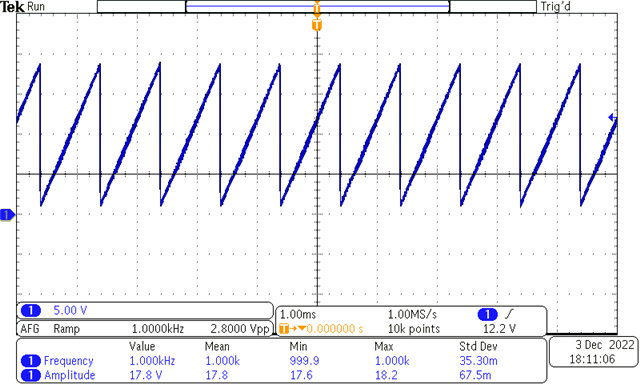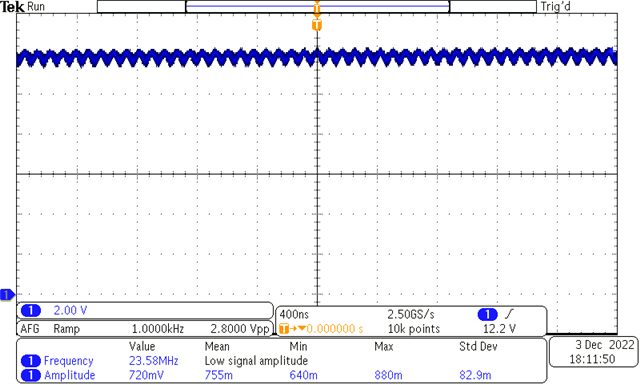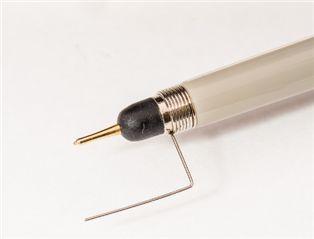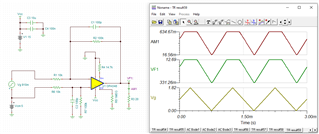I am trying to design a non-inverting amplifier similar to the one given in Fig 26 of https://www.ti.com/lit/ds/symlink/opa548.pdf.

This is the circuit diagram. The input is a ramp signal with high voltage 3 V and low signal 0.2 Vp-p and frequency 1 kHz.
I am getting the expected output.

But if I zoom into the signal, I also see a sine signal of frequency around 10 MHz and amplitude 0.7 Vp-p added to the output.

What could be the cause and how to get rid of it?






